When exploring the ancient land of Hoi An, one cannot overlook the Hoi An Traditional Handicraft Workshop. Perhaps you have heard a lot about the architecture that blends various cultures, the ancient streets, the moss-covered ancient houses, the long-standing traditional craft villages, the people of Hoi An, the cuisine, and so on. It would be a great loss if you ignore the small items that carry the soul of the nation, meticulously crafted by skilled hands. Some craftsmen work tirelessly day and night to create exquisite handmade products at the Hoi An Handicraft Workshop, aiming to export these handicraft products worldwide. These products are the pride of the Vietnamese nation, a heritage of a thousand years.
The Hoi An Traditional Handicraft Workshop is a fascinating destination that you shouldn’t miss on your journey to visit the Hoi An Ancient Town. Here, various craft villages converge, offering products imbued with the rich beauty of long-standing traditional culture. It promises to provide you with truly interesting experiences during your trip to Hoi An.
Table of Contents
Where is the Hoi An Traditional Handicraft Workshop located?
- Address: 09 Nguyen Thai Hoc Street, Minh An Ward, Hoi An, Quang Nam
- Opening Hours: 07:00 AM – 06:00 PM
The Hoi An Traditional Handicraft Workshop, also known as the Hoi An Craft Village, is situated at number 9 Nguyen Thai Hoc Street. This craft village was established in the 15th-16th centuries. It originally occupied the most bustling area of Hoi An and has existed for many years.
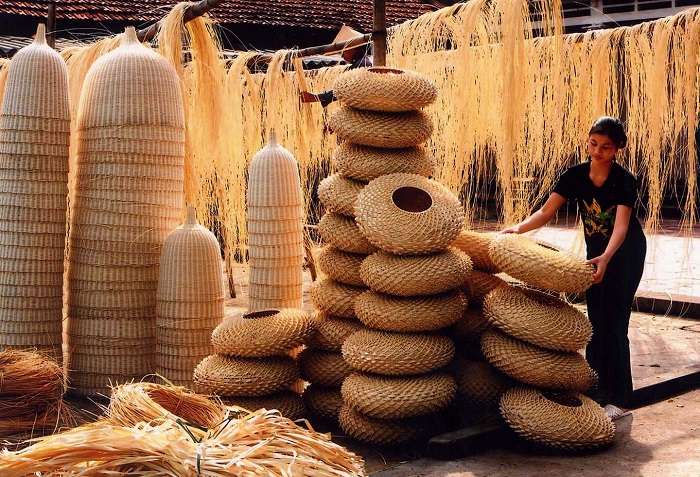
As of the present time, the Hoi An Traditional Handicraft Workshop still houses 12 traditional crafts. These crafts include carpentry, pottery, lantern making, conical hat crafting, weaving, mat making, tailoring, embroidery, lacquerware, and bamboo weaving.
How to visit the Hoi An Traditional Handicraft Workshop?
Take a stroll around Hoi An’s ancient town and head to Nguyen Thai Hoc Street. Look for house number 09, and you will find the Hoi An Traditional Handicraft Workshop.
If you are in Da Nang and want to visit the Hoi An Traditional Handicraft Workshop in a day trip, you can book a private car service from Danang to Hoi An From DanangPrivateCar.com. With their fast and convenient service, they will provide door-to-door transportation, making your trip to Hoi An the easiest and most hassle-free experience.
What is special about the Hoi An Traditional Handicraft Workshop?
This tourist destination in Hoi An is a popular choice among many travelers because of its exquisite products from traditional craft villages. These items not only exhibit exceptional craftsmanship but also carry significant cultural value and nostalgic charm.
Phi Yen Ancient House in Hoi An
The Phi Yen Ancient House is renowned as a famous trading brand in Hoi An’s ancient town. This century-old house is also a prominent historical site in Hoi An. The Dong Trong Arts Center is another name for this ancient house, serving as both an exhibition space and a platform for promoting handicraft products from various villages.
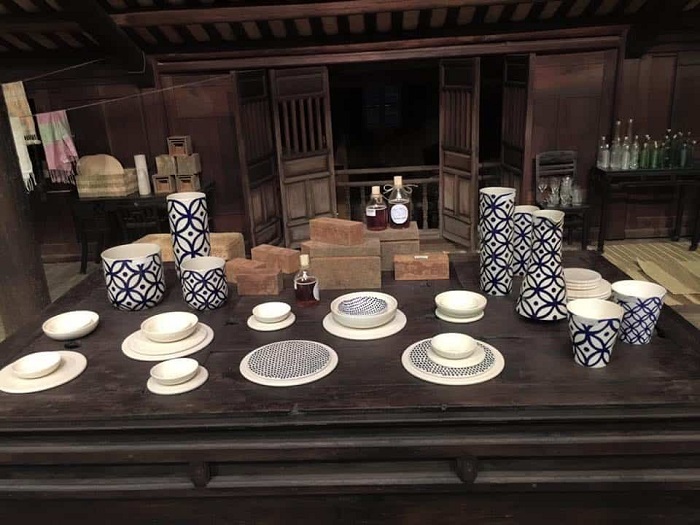
Visiting this ancient house, tourists can immerse themselves in an atmosphere rich in ancient artistry. The meticulously crafted artworks vividly portray scenes of traditional daily life and ancient folk culture.
Ticket prices for the visit:
- Vietnamese tourists: 80,000 VND/person
- International tourists: 150,000 VND/person
- Opening hours: 7:00 AM – 6:00 PM
Appreciate the exquisite handicraft products.
The Hoi An Traditional Handicraft Workshop displays a wide range of unique products. There are antique oil paintings, intricately carved wooden panels adorned with beautiful patterns, and elaborately crafted lanterns in a variety of artistic colors. All these items possess a refined beauty due to the meticulous designs by highly skilled craftsmen. Visitors to this place will be astonished by the distinctive features of these handmade products.
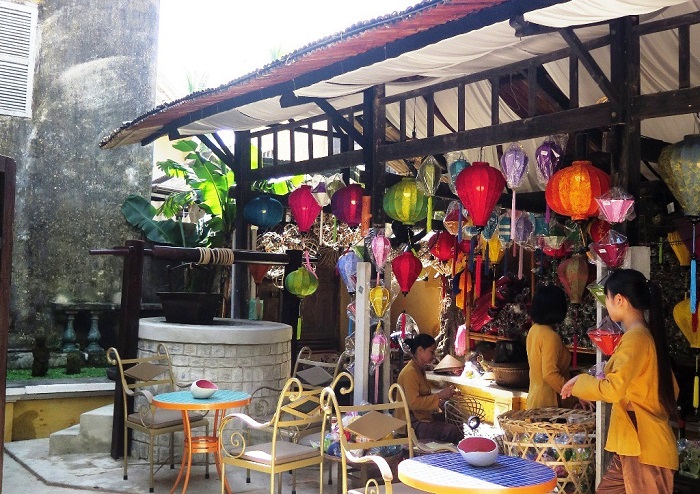
Although some of these items may seem familiar in the context of local life, there are countless different shapes and designs available here. Therefore, it is believed that these products will captivate your eyes and enhance your travel experience.
Explore the process of traditional handicraft production in Hoi An.
By visiting the Hoi An Traditional Handicraft Workshop, tourists can witness the process of creating a finished product firsthand. Through this experience, you can appreciate the meticulousness and dedication of the artisans involved.
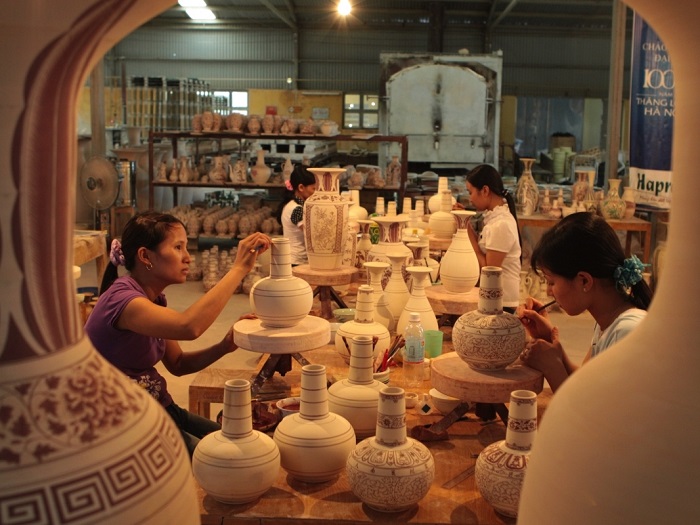
At certain stages, you might even have the opportunity to personally shape the products under the guidance of skilled artisans. This experience is incredibly valuable and will leave a lasting impression, so if you have the chance, make sure to visit this Hoi An tourist destination!
History of Formation and Development of Traditional Handicraft Villages
In the Hoi An handicraft workshop, there are 12 representative traditional handicraft villages, each with its own unique beauty, faithfully reproduced.
Woodworking Village
Famous as Kim Bong Carpentry Village. The founder of this craft was a migrant from Thanh Hoa who settled in Kim Bong along with four other families: Phan, Truong, Huynh, and Nguyen. By the 18th century, this craft village flourished and was divided into three main categories: construction carpentry, civil carpentry, and shipbuilding carpentry.
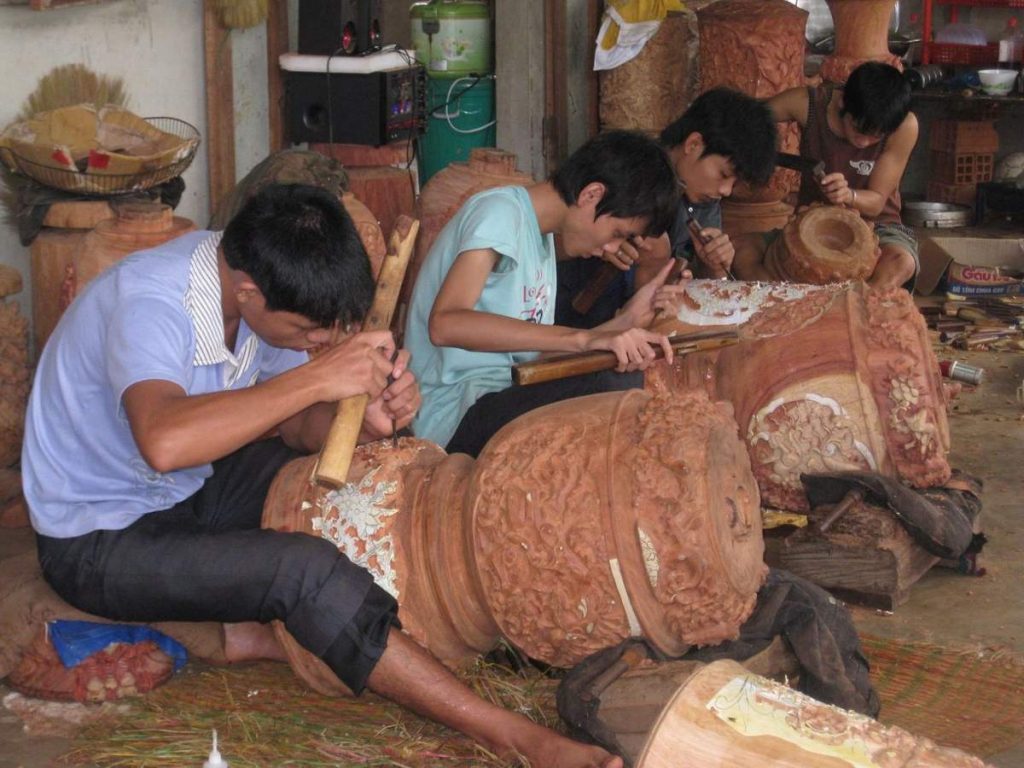
The carving techniques and crafting skills of the craftsmen in Kim Bong Carpentry Village are evident in monumental structures such as assembly halls, pagodas, communal houses, and churches. These works have stood the test of time and are preserved until today.
Pottery Village
Traditional pottery has a long history, originating in the 16th century in Thanh Chiem Village, which later moved to Thanh Ha Village, present-day Hoi An’s ancient town. Hence the name Thanh Ha Pottery Village. Thanh Ha Pottery Village in Hoi An’s ancient town has witnessed historical ups and downs. It reached its peak in the 17th century and was renowned as a “national product.”
Lantern Village
In ancient times, Chinese immigrants from places like Chaozhou, Fukien, and Guangdong settled in Hoi An and, out of homesickness, created lanterns hanging in front of their houses. The ancestral village of lantern making is named Xa Duong, and this clan specialized in making lion heads and lanterns, adding brilliance to ancient festivals and competitions. Over time, the people of Hoi An have continued to innovate and diversify lantern shapes, colors, and materials.
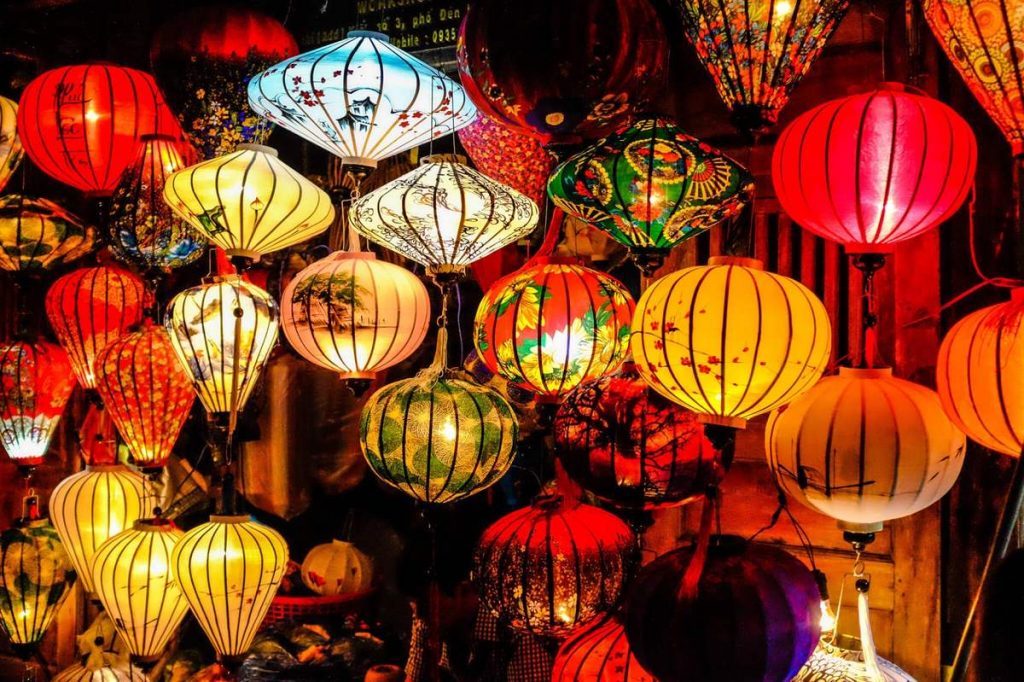
Bamboo and Rattan Weaving Village at Hoi An Handicraft Workshop
Using natural materials close to the locals such as bamboo and rattan, artisans have created products like baskets, chairs, tables, trays, sieves, screens, and more for daily use.
Conical Hat Making Village
To create a conical hat, a special mold with up to 16 rings, the most intricate being Quang-style molds with engraved ridges, is necessary. The hat then goes through 12 stages: splitting the rings, attaching the rings, removing leaves, ironing leaves, threading leaves, framing poems, decorating, binding the final rim, smoothing the rim, coating with varnish, attaching the strap, and securing the strap, before becoming a complete conical hat. This intricate and meticulous process demands the craftsmanship of skilled artisans.

Weaving Village
One cannot overlook the Ban Thach mat weaving village: the main material for mat weaving is sedge, growing luxuriously along the peaceful Thu Bon River. This traditional craft village, passed down from generation to generation, has existed for so long that locals cannot pinpoint its origins.
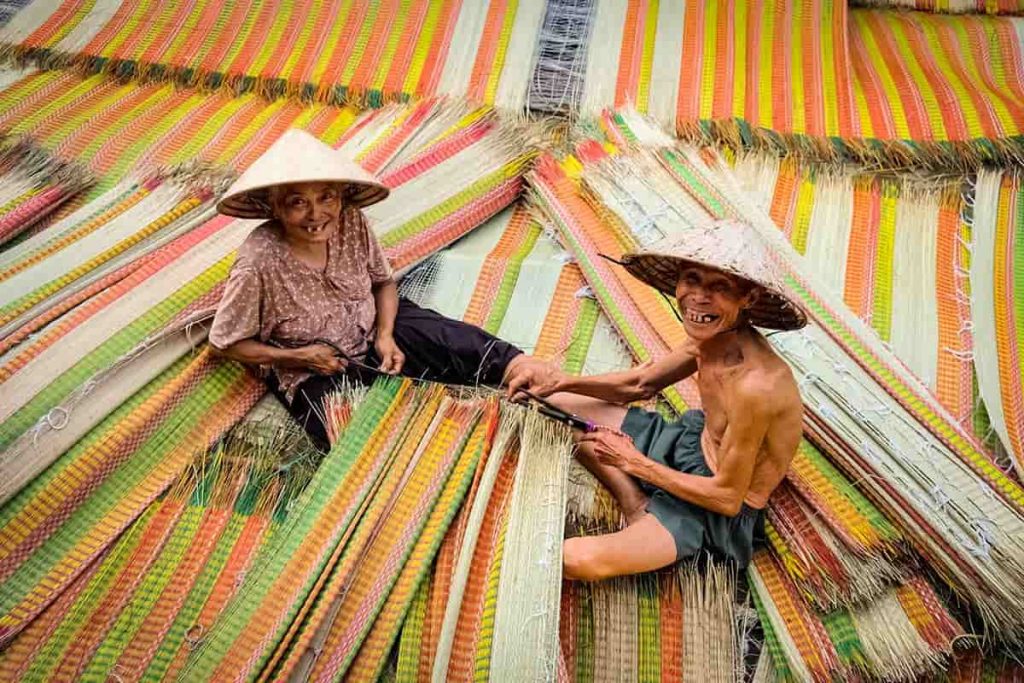
The simple, white, coarse strands, skillfully woven by the hands of Ban Thach women, create various types of mats, each with its distinct patterns, such as bong mats, floating mats, white mats, floral mats, and decorative mats, highly regarded by domestic consumers.
Silk Weaving Village
Ma Chau silk has been famous since the 16th century in Quang. The locals knew how to grow mulberry trees, raise silkworms, and weave silk. By the 19th century, the high quality of Ma Chau silk had made it renowned nationwide, supplying the royal court, officials, and nobility.
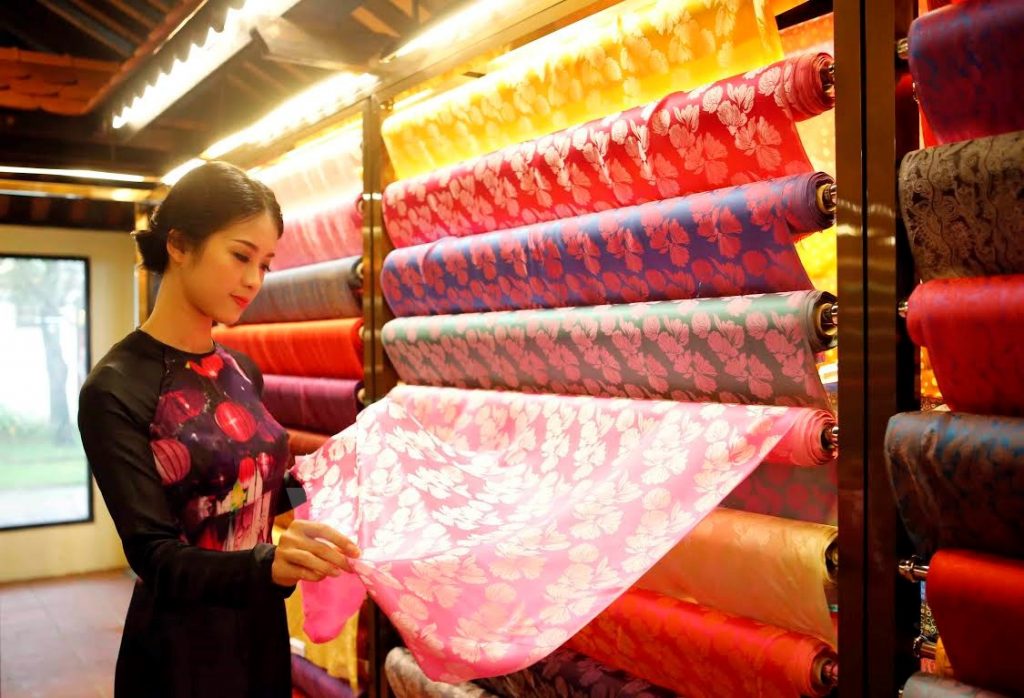
At the end of the 19th century, Mã Châu residents began cultivating more silkworms and weaving fabric, incorporating industrial machines into production to enhance productivity and product quality. As a result, the silk weaving village has been honored as one of Quang’s 18 traditional craft villages.
Embroidery Village
With the flourishing development of the silk weaving village, the embroidery village also made significant progress, from simple needlework to sophisticated techniques like hidden stitching. Traditional hand-embroidered products such as scarves, hats, ao dai (traditional Vietnamese dresses), fabric shoes, pillowcases, wallets, handbags, landscape paintings, and portraits are not only supplied to the domestic market but also exported abroad.
Tailoring Village
Centuries ago, when Hoi An’s bustling trading port thrived, craft guilds and traditional handicraft villages prospered alongside. Tailoring has become a compelling brand for foreign tourists visiting Hoi An.
Hoi An tailors measure, cut, and sew for tourists within a few hours, using luxurious materials like silk or cool, sophisticated linen, creating a sense of closeness to nature. Affordable prices and quick, efficient tailoring make foreign visitors satisfied, and they bring these tailor-made items back to their countries as souvenirs.
Lacquerware Village at Hoi An Handicraft Workshop
Lacquerware is considered the pinnacle of painting due to the meticulous, elaborate work of lacquer artists. Traditional lacquer painting materials include then lacquer and winged-leaf lacquer for binding, along with various pigments, shellac, and gold-leaf. The painting is done with traditional colors and binding materials, followed by a period of high humidity and protection from wind.
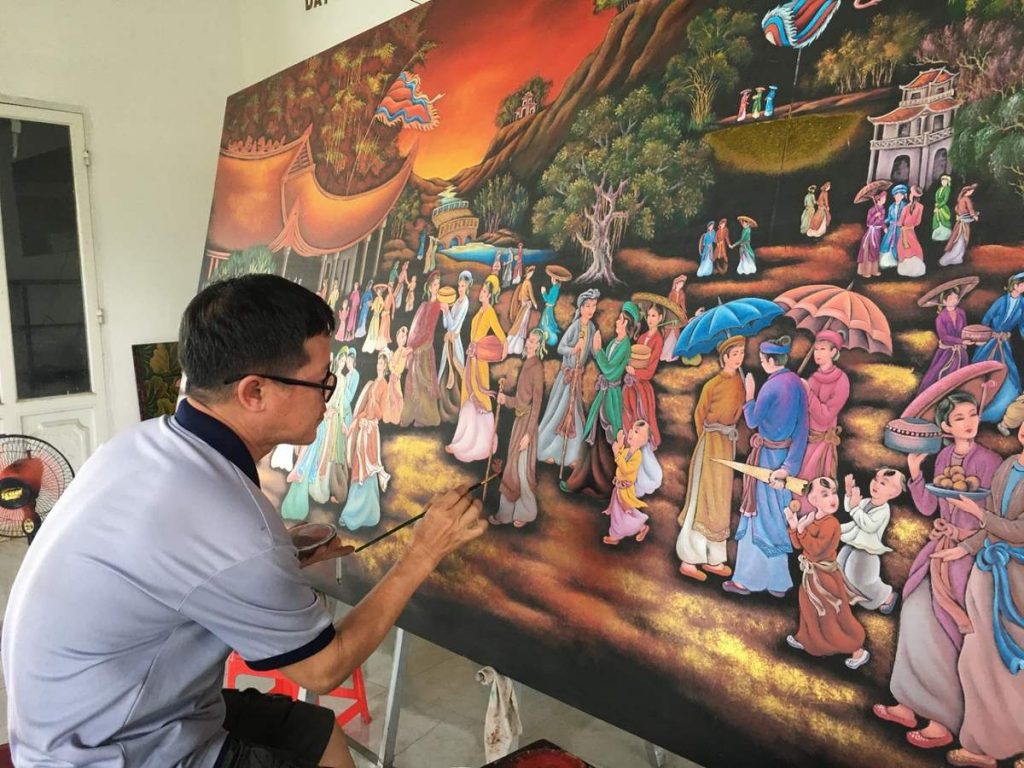
To complete the painting, it must be repeatedly polished until the images emerge clearly. The painting undergoes numerous rounds of polishing, ultimately requiring a final gloss to be considered complete. Due to the elaborate techniques, each lacquer painting created holds immense value both aesthetically and materially.
Wood Inlay Village
In the past, ivory was the primary material for wood inlay, but nowadays, rare and precious woods such as lim, rosewood, etc., are used. Wood inlay products depict various subjects such as people, objects, mythical creatures—dragons, horses, elephants, and cats.
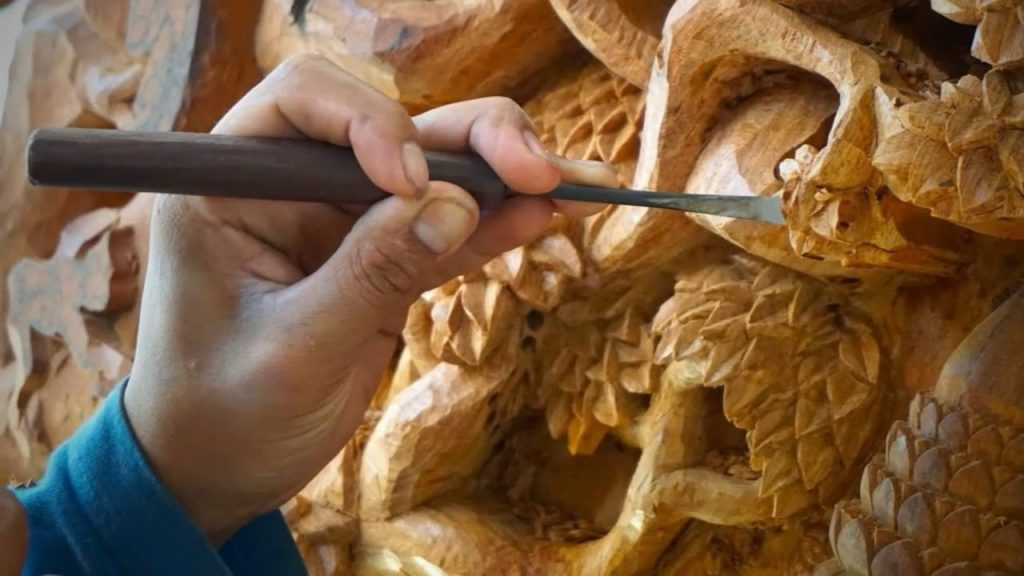
This craft does not have formal classes but is passed down through generations, with elders teaching their children and grandchildren the trade. Modern wood inlay techniques include inlaying, inlaying beneath the surface, raised inlaying, layered inlaying, and more. Consequently, the wood inlay artworks created are highly valuable.
Oil Painting Village
In Hoi An, most oil paintings depict the lives of ancient Hoi An residents: street corners, street vendors, ancient houses, household activities, and more. The primary materials used are powdered pigments mixed with dry oil as the binding agent. Ancient Hoi An residents often used drying oils like linseed oil or tung oil. These oils are boiled with tree resins like pine resin or incense resin to create a glossy layer, enhancing the beauty of the painting.
What to eat when visiting the Hoi An Traditional Handicraft Workshop.
After exploring the Hoi An Handicraft Workshop, don’t forget to visit Hoi An Market to indulge in the local specialties! Hoi An’s ancient town is renowned as a culinary paradise, offering millions of delicious dishes that every traveler should try at least once.
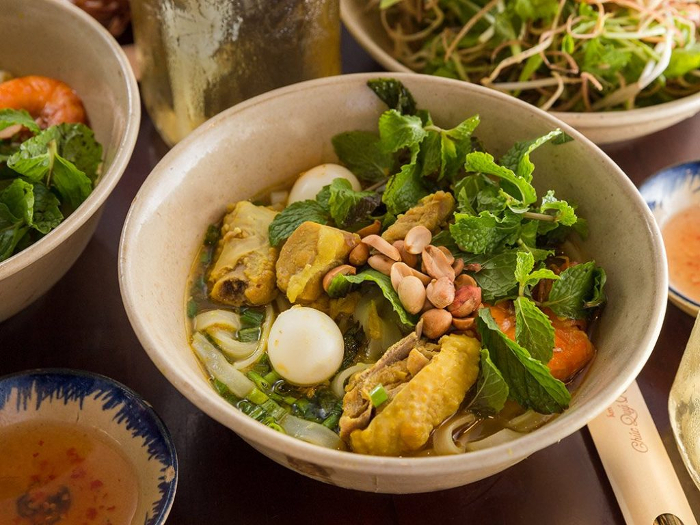
Quang noodles, Cao Lau, Hoi An chicken rice, Hoi An desserts like red bean sweet soup, lotus seed sweet soup, black sesame sweet soup, delicious corn sweet soup, etc. Various specialties of Hoi An: crispy pancakes, water fern cakes, white rose dumplings, smashed rice cakes, grilled meat wrapped in wet rice paper,…
Notes for Visiting Hoi An Handicraft Workshop
Below are some notes to consider when visiting the Hoi An handicraft workshop that DanangPrivateCar.com recommends you to refer to for a better touring experience:
- Respectful Attire: When visiting the Hoi An handicraft workshop, it’s essential to dress modestly and respectfully. This shows regard for the cultural significance of the place.
- Ask Permission: Always ask for permission before taking photographs, especially if you’re capturing artisans at work or their creations. Some artisans might prefer not to be photographed, so it’s courteous to respect their wishes.
- Respect Artisans: The artisans in Hoi An take great pride in their work. Show respect for their craftsmanship and skills. If you have the opportunity, engage in conversation to learn more about their techniques and traditions.
- Hands-On Experience: Some workshops might offer hands-on experiences where you can try your hand at crafting. Be patient and follow the guidance of the artisans. It’s a great way to appreciate the skill and effort involved in their work.
- Support Local: Whenever possible, buy directly from the artisans or local cooperatives. This ensures that your money goes directly to the craftsmen and helps sustain the local economy.
- Language: English might not be widely spoken, so it’s helpful to learn a few basic Vietnamese phrases or carry a translation app to facilitate communication.
- Be Mindful of Cultural Differences: Remember that you are a guest in another culture. Be open-minded, understanding, and appreciative of the differences you encounter during your visit.
- Environmental Considerations: Dispose of your waste responsibly and avoid using single-use plastic items. Respect the environment and the local community.
- Time Management: Plan your visit considering the opening and closing times of the workshop. Arriving earlier in the day might offer a quieter and more immersive experience.
It can be said that the Hoi An handicraft workshop is a cultural heritage that needs to be preserved and developed, as it significantly contributes to the charm of Hoi An’s ancient town. Join DanangPrivateCar.com’s to visit the Hoi An handicraft workshop and witness its beauty. Don’t forget to use our private car service with driver in Hoi An for the easiest Hoi An trip.

Comments